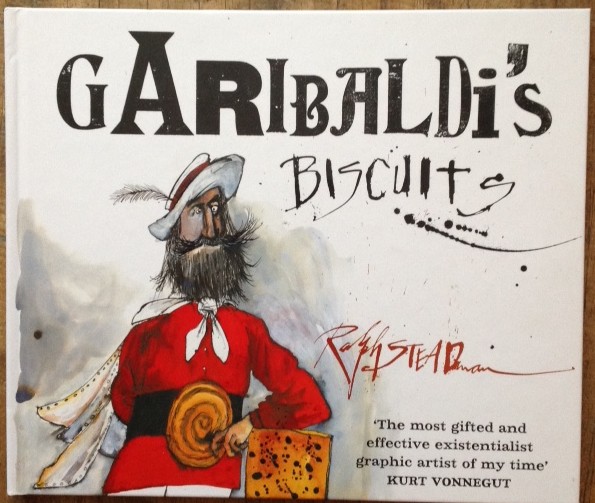Inspiring Young Readers
 posted on 08 Feb 2021
posted on 08 Feb 2021
Garibaldi’s Biscuits by Ralph Steadman
In the golden days of my childhood (and in truth well beyond them too) I used to love biscuits. And, as children will, I spent quite a lot of time trying to decide which was my favourite: chocolate covered biscuits always had an advantage and I never did take to anything with icing on them. What was also an added fascination was the way in which different types of biscuits would often have names that I couldn’t account for. While some came with perfectly ordinary and understandable names – custard creams or fig rolls for instance – others had pleasingly mysterious labels: Lincoln, Shrewsbury, Digestive, Garibaldi, Bourbon. The mystery of the name seemed to add to the frisson of the treat. Where did those names come from?
Well, for those children still prone to contemplating the mystery of how the biscuit got its name, maverick artist Ralph Steadman’s Garibaldi’s Biscuits offers up a typically eccentric explanation of the origins of that pleasingly current-packed snack and the chocolate cream splendour of the Bourbon.
When the great Italian hero, Garibaldi comes home to Southern Italy after his great adventures abroad, he’s outraged to discover that invading French soldiers (the Bourbons) have taken his grandmother captive to cook for them – after all, she is a supercook. Garibaldi decides he has to do something and so he calls on his red-shirted army to gather for battle – armed with their water balloons and snacking on the pizza belt-buckles they wear to stave off hunger in battle.
But Garibaldi’s grandmother takes pity on both sides and decides to make special batches of biscuits for both armies in case they get famished while they are fighting over her. She uses her melted chocolate to make the biscuits for the French army but runs out of the filling for the Italians – so she falls back on the dried grapes from the fields, filling the small holes with raisins.
And so the Bourbon and Garibaldi biscuits are born!
At the end of the story Steadman does tell his readers a slightly more truthful story about Garibaldi, the Bourbon French and the origins of the biscuits but really I doubt anyone wants the rather more mundane truth once they’ve experienced the surreal fantasy he has just cooked up for us.
Anyone familiar with Steadman’s drawings will pretty much know what to expect when it comes to the illustrations. They’re highly coloured pen and inks with a sort of dashing, artful carelessness about them that gives everyone and everything a rakish feel. His ability to create a sense of anarchy is unparalleled and will not only appeal to adults but younger readers too.
First editions in hardback are perhaps a little more expensive than you might imagine but there are plenty of cheaper later edition copies available for a lot less.
Terry Potter
February 2021